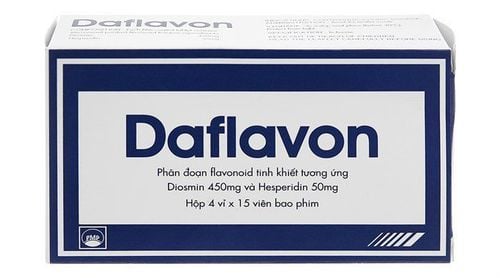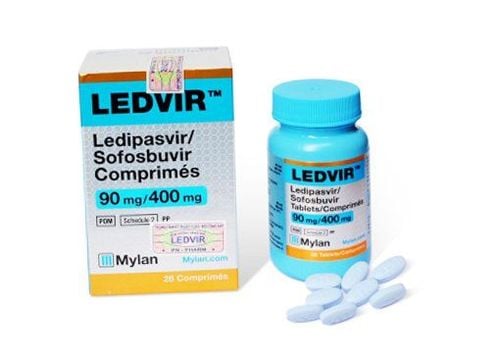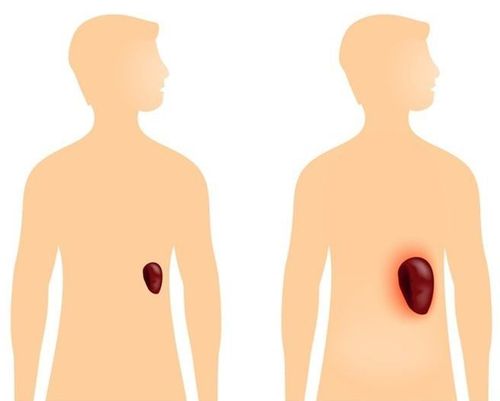This is an automatically translated article.
Banti syndrome is a condition in which an enlarged spleen destroys red blood cells. This disease can cause serious complications that can be life-threatening, so it is important for patients to receive prompt treatment.
1. What is Banti Syndrome?
Banti syndrome is a chronic congestive splenomegaly that leads to premature destruction of red blood cells in the spleen. The disease is named after Italian physician and pathologist Guido Banti.
2. Causes of Banti syndrome
Banti syndrome can occur due to a number of different factors causing abnormal blockage and elevation of blood pressure inside some of the splenic or hepatic veins.
These symptoms may include birth abnormalities (congenital) of the veins, blood clots, or other underlying disorders that cause inflammation and venous obstruction (blockage of blood vessels) of the liver like cirrhosis. Increased arsenic intake has also been linked to some cases of the disease. In addition, some cases have also occurred in patients receiving long-term azathioprine, especially after kidney transplantation.
3. Symptoms of Banti syndrome
Here are some typical symptoms of Banti syndrome
Enlarged spleen (solid density, smooth surface, painless) Vomiting blood and melena due to ruptured esophageal varices, sometimes with fibrosis ascites (ascites, atrophy).

Nôn ra máu là biểu hiện điển hình của hội chứng Banti
4. Diagnosis and treatment of Banti . syndrome
4.1 Diagnosis The diagnosis of Banti syndrome is based on a comprehensive clinical assessment and a series of specialized tests, especially advanced imaging techniques such as: CT and magnetic resonance imaging. (MRI) .
Laboratory tests: Red blood cell anemia, leukopenia and thrombocytopenia. Anemia, iron deficiency occurs after bleeding. The bone marrow is initially normal, but is later hyperplastic.
4.2 Treatment Treatment for Banti syndrome depends on the cause. In the case of Banti syndrome caused by azathioprine or arsenic, you should stop being exposed to these factors.
The main problems of Banti syndrome are esophageal bleeding and varicose veins such as dilated blood vessels in the stomach. Active bleeding in Banti syndrome can be effectively treated with vasopressors or through other methods used to treat hypertension. In the case of recurrent bleeding in Banti syndrome, the doctor may choose bypass surgery to re-establish blood flow.
5. Diet for patients with Banti . syndrome
People with cirrhosis of the liver and spleen with Banti type need to have a healthy and safe diet to provide enough nutrients for the body and minimize toxins entering the body. People with cirrhosis should eat a lot of vegetables, fruits, whole grains.... Limit eating meat, eggs, fish, protein-rich foods, because eating a lot of protein will lead to increased levels of ammonium in the blood. cause hepatic coma. Therefore, you should eat a moderate amount of protein or as directed by your doctor. In addition, instead of eating protein from animals you should eat more protein found in plants and legumes. Should eat light, limit the amount of sodium absorbed into the body. Avoid eating canned foods that are high in salt and MSG. Avoid eating raw seafood, or snails, shellfish... because they contain many bacteria that can be dangerous for people with cirrhosis of the liver. Do not drink beer, alcohol, stimulants harmful to the liver. In addition, regular health check-ups are required to monitor the progress of the disease.

Người mắc hội chứng Banti nên ăn nhiều các loại đậu
6. Prevention of Banti . syndrome
Hepatitis B vaccination for both children and adults who have not yet had the disease. Eat healthy, eat well cooked to avoid infection with parasites. Choose clean foods to ensure they are not contaminated with harmful chemicals that damage the liver. Do not abuse and use drugs indiscriminately without a doctor's prescription. Especially drugs that are harmful to the liver. People who are suffering from hepatitis B and C need to have regular checkups every 3 or 6 months to monitor the progress of the disease, in order to promptly detect cases of hepatitis with signs of progression, limiting the disease to progress. cirrhosis and its dangerous complications.
Please dial HOTLINE for more information or register for an appointment HERE. Download MyVinmec app to make appointments faster and to manage your bookings easily.













